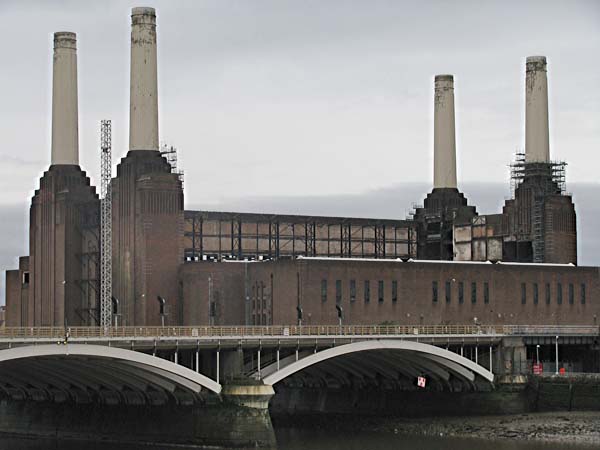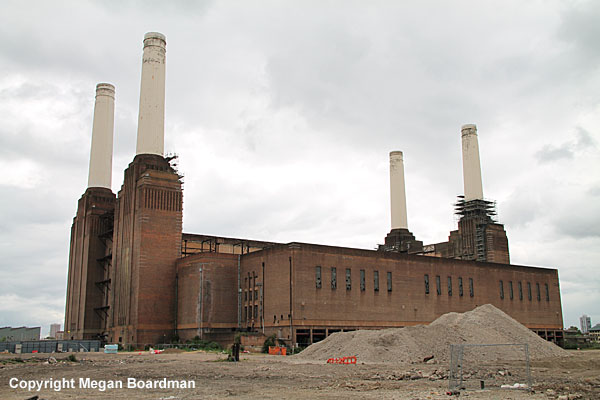Battersea
Power Station - London, UK

Architect
|
Theo Halliday of Halliday and Agate & Giles
Gilbert Scott
|
Date Built
|
A Station
commissioned 1933 - 1935
B Station commissioned 1953 - 1955
|
Location
|
Beside Battersea
Bridge in London
|
Description
|
The remains of the Battersea Power
Station sit beside the Thames near Battersea
Bridge. Its four white chimneys have
become an iconic sight in the city. It is
in fact two power stations built in stages on
either side of World War II so when the A
Station was commissioned in the mid 1930s there
were only two chimneys. Within months of
the ending of the war construction began on the
B Station which was ready for commissioning a
full 20 years after the A Station. So it
wasn't until the mid 1950s that all four of the
chimneys were in place.

Battersea was the first of the super power
stations to be built in the London area and
there was a degree of controversy over its size
and its impact on the surrounding area.
From a visual point of view this concern was
addressed by involving the architect Giles
Gilbert Scott in the design of the
exterior. His design resulted in a
building that has been described as a "Temple of
Power" with chimneys that resembled classical
columns.
Prior to World War II the station was burning
4,000 tonnes of coal weekly and confirming the
expressed fears about pollution. However,
it was in that pre-war period that scrubbers
were added to the chimneys to remove sulphur
from the emissions, but this didn't reduce the
impact that the station was having on the
Thames.
The A Station ceased to operate in 1975 and the
B Station eight years later in 1983. Since
then there have been numerous efforts to both
protect the building and to find ways to
incorporate it in new developments.
English Heritage have given it Grade II* Listing
and added it to its Building at Risk
Registry. They describe its present
condition as "Poor". Along the way there
have been plans to convert it into an amusement
park,
a retail outlet, residential flats, a hotel and
conference facilities and recently it has been
linked with the construction of a new stadium
for the Chelsea Football Club.
The building's roof was removed in the 1980s and
since then the deterioration of the building has
only accelerated. Within the crumbling
structure, the spectacular Art Deco control room
still exists and from time to time features as a
backdrop for films, including a recent
appearance in BBC's Sherlock.
|
Close
Window

|



